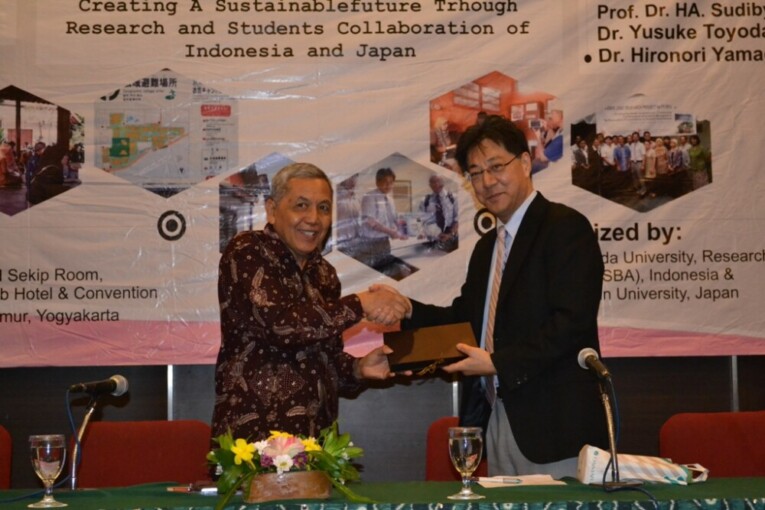
YOGYAKARTA – Researchers from Universitas Gadjah Mada and Ritsumeikan University Japan have collaborated on disaster information management system that targets tourist destination areas, namely Parangtritis and Kotagede in Yogyakarta and Borobudur Temple in Central Jawa.
Vice Rector for Research and Community Service of UGM, Prof. Dr. Suratman, M.Sc., said the research collaboration stemmed from the experiences shared by both countries in applying disaster risk management, which includes the Mt. Merapi eruption and earthquake in Bantul, earthquake in Kobe, as well as tsunami in Tohoku Japan. “The experiences of both Indonesia and Japan as a place prone to disasters are very important to share to see each other’s views on disaster risk management,” said Suratman opening a symposium of research collaboration between UGM and Ritsumeikan, Monday (2/1), at University Club UGM.
Head of Disaster Management Magister Studies of UGM, Prof. Dr. Sudibyakto, said the research such as this would give information on the pluses and minuses of each policy taken by the governments of Indonesia and Japan in disaster risk mitigation.
Prof. Dr. Yoshimitsu from College of Policy Science, Ritsumeikan University, highlighted the lengthy process of rehabilitation and reconstruction that took 3-5 years after the earthquake and tsunami in Japan. “Some of the displaced persons were not willing to relocate due to the limited facilities provided by the government,” he said.
He proposed the displaced persons whose home were badly damaged are given two options, whether to reside in a public housing or to build their own home but funded by government.

